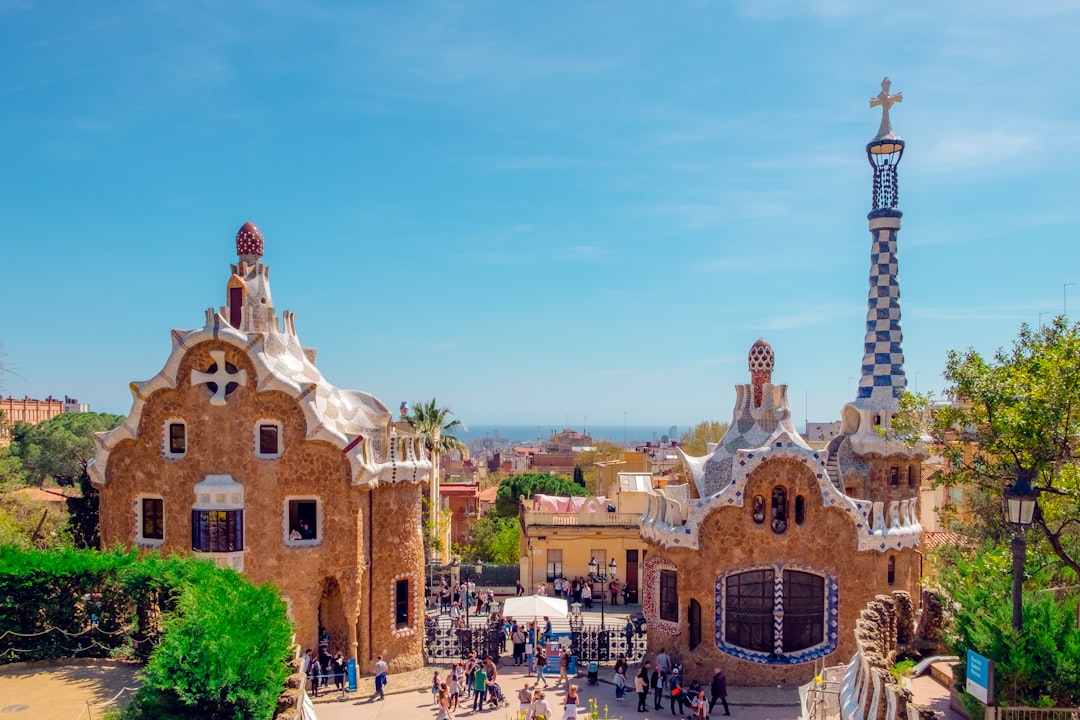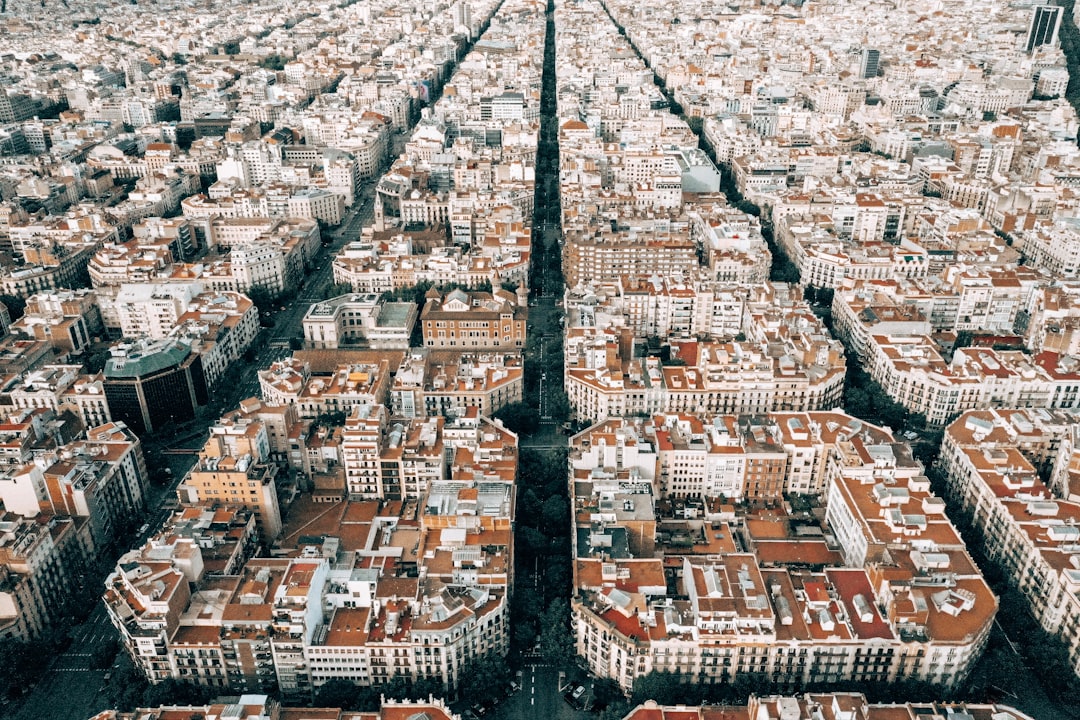7 Controversial Measures Barcelona Is Taking To Combat Overtourism
7 Controversial Measures Barcelona Is Taking To Combat Overtourism - Capping Cruise Ship Arrivals to Curb Pollution
Barcelona is taking bold steps to address the impact of cruise ship arrivals on the city's air quality and overcrowding. Starting in October 2023, the city will enforce a stricter daily cap of seven cruise ship arrivals, down from the previous limit of ten. This move aims to reduce the influx of cruise passengers and mitigate the environmental burden on the city. Additionally, the city plans to relocate most cruise ship activity outside of the central harbor area, aiming to preserve the historic heart of Barcelona and enhance the quality of life for residents.
The new daily cap of 7 cruise ships per day in Barcelona represents a 30% reduction from the previous limit of 10 ships, aiming to significantly scale down the environmental impact.
By relocating most cruise ship activity to the Moll d'Adossat pier, located 30 minutes outside the city center, Barcelona is creating a physical barrier to limit cruise passenger access to the historic inner city.
Barcelona's new "single ship per terminal" rule is expected to reduce congestion and crowding at the port, as cruise lines will no longer be able to dock multiple ships simultaneously.
The closure of the North terminal to cruise ships is a strategic move to further restrict cruise traffic and shift activity away from the most central parts of the city.
The upcoming cruise tax, set to be introduced in the coming years, is designed as a financial disincentive to discourage cruise lines from sending the largest, most polluting ships to Barcelona.
Barcelona's plan to require cruise ships to connect to the city's electricity grid while docked, using 100% renewable energy, represents a pioneering approach to reducing the environmental footprint of the cruise industry.
7 Controversial Measures Barcelona Is Taking To Combat Overtourism - Headset Mandate for Tour Guides to Reduce Noise Disruption
Barcelona is taking steps to combat the disruptive effects of overtourism in the city center. Starting next year, tour guides will be required to use headsets and earpieces instead of megaphones when leading groups, with the aim of reducing noise levels. This is part of a broader set of measures the city is implementing to address the negative impacts of large influxes of tourists.
The new regulations have sparked some controversy, as there are concerns that the headset mandate may compromise the experience for tourists and potentially impact the livelihoods of tour guides who rely on tips. Additionally, questions have been raised about the clarity and fairness of the policy's implementation.
The average noise level produced by tour guides using megaphones in crowded areas of Barcelona can reach up to 95 decibels, comparable to a motorcycle engine or a lawn mower operating nearby.
Studies have shown that prolonged exposure to noise levels above 85 decibels can lead to temporary or permanent hearing damage, making the current practice of using megaphones a potential health hazard for both tourists and locals.
The new mandate aims to limit the maximum noise level produced by tour guides to 75 decibels, which is equivalent to the sound of a running dishwasher or a normal conversation, significantly reducing the disruption to nearby residents and businesses.
Barcelona's municipal government conducted extensive testing and found that the use of high-quality headsets and earpieces can effectively transmit a guide's voice to their group while keeping the overall volume at a much lower level, without compromising the quality of the tour experience.
The new regulations will require tour operators to provide their guides with the necessary headset equipment, ensuring compliance and a consistent experience across different tour companies operating in the city.
Barcelona's city planners are working closely with local tour associations to develop guidelines on optimal headset usage, including recommendations on audio levels, signal range, and battery life to ensure seamless implementation of the new mandate.
While some tour guides have expressed concerns about the potential impact on their tips and overall earnings, the city has pledged to provide subsidies and training programs to help ease the transition to the new communication technology.
7 Controversial Measures Barcelona Is Taking To Combat Overtourism - Restricting Short-Term Rentals to Maintain Housing Affordability
In Barcelona, the city is taking measures to combat overtourism and maintain housing affordability, including restricting short-term rentals. The city is focusing on enforcement, a key factor in the success of policies that restrict short-term rentals, as evidenced by the reduction in annual rental spending and average savings per year seen in cities like Irvine and the bold one-year short-term rental moratorium enacted in Aspen.
Regulating short-term rentals is a complex policy issue, and cities must navigate legal battles and contentious city hall meetings. However, research has shown that restricting short-term rentals can help maintain housing affordability by reducing the number of homes available for long-term rent and decreasing long-term rental prices.
A study in Irvine, California found that a short-term rental ban led to a 7% decrease in long-term rental prices and a reduction of $72 million in annual total rental spending.
Research by the Harvard Business Review has shown that restricting Airbnb rentals reduces development and increases housing affordability.
The city of Aspen took the bold step of enacting a one-year short-term rental moratorium to combat the impact of these rentals on the local housing market.
Barcelona has implemented restrictions on the number of short-term rentals and a moratorium on new licenses as part of its efforts to combat overtourism and maintain housing affordability.
The Sustainable Economies Law Center has developed a guidebook to help cities equitably regulate short-term rentals and balance public interests with the need for residents to host and earn income from these rentals.
In Irvine, California, a short-term rental ban led to an average savings of $1,212 per year for residents due to the decrease in rental prices.
Enforcement has been identified as a key factor in the success of policies that restrict short-term rentals, as cities must navigate complex legal battles and contentious city hall meetings to implement these measures.
Research has shown that short-term rentals, such as those offered through Airbnb, can drive up long-term rents and reduce the availability of long-term rentals, making it more difficult for residents to find affordable housing.
7 Controversial Measures Barcelona Is Taking To Combat Overtourism - Directing Tourists to Lesser-Known Areas Through Campaigns
Barcelona's efforts to combat overtourism include directing tourists towards lesser-known areas through targeted awareness campaigns. These initiatives aim to promote the unique experiences and attractions of off-the-beaten-path destinations, encouraging visitors to explore beyond the city's traditional hotspots. While the measures have faced criticism from some stakeholders, they represent Barcelona's attempt to manage the influx of tourists and mitigate the impact on local infrastructure and communities.
Barcelona's municipal government has allocated over 5 million euros annually towards marketing campaigns that highlight the city's lesser-known neighborhoods and attractions, aiming to divert tourist flow away from the overcrowded Las Ramblas and Gothic Quarter.
By analyzing mobile phone data, Barcelona has identified key "overtourism hotspots" and is now using targeted digital advertising to encourage visitors to explore areas like Poblenou, Sants, and Gracia, which see a fraction of the tourists compared to the city center.
A recent survey found that over 60% of first-time Barcelona visitors were unaware of the city's extensive network of beautiful public parks and gardens outside the main tourist districts, prompting the launch of a major "Barcelona Green Spaces" promotional campaign.
Barcelona's tourism board has partnered with popular online travel platforms to integrate lesser-known attractions and activities into their recommendation algorithms, making it easier for tourists to discover alternatives to the crowded Sagrada Familia and Camp Nou stadium.
Barcelona has begun offering free guided walking tours that take visitors through atmospheric neighborhoods like Raval and El Clot, showcasing the unique local architecture, culinary offerings, and artisan workshops often overlooked by mass tourism.
Catalonian researchers have determined that shifting just 10% of Barcelona's annual 30 million tourist visits to peripheral districts could reduce congestion in the city center by up to 25%, while also boosting economic opportunities in underserved areas.
Utilizing data from city-wide sensors and beacons, Barcelona's tourism department has created real-time "visitor distribution" maps, allowing them to dynamically adjust marketing and signage to divert crowds away from temporarily overcrowded sites.
A pilot program offering steep discounts on public transportation and museum tickets for tourists who agree to spend the majority of their stay exploring neighborhoods outside the historic center has seen a 30% uptake since its launch in
Barcelona has mandated that all new tourism-focused businesses and attractions receiving municipal funding must be located more than 500 meters from the city's most popular landmarks, in an effort to organically expand the geographic spread of visitor activity.
7 Controversial Measures Barcelona Is Taking To Combat Overtourism - Increasing Police Presence to Address Tourist-Related Crimes
Barcelona is taking measures to address the rise in tourist-related crimes, including increasing police presence in the city's busiest areas. The city has implemented new restrictions on guided tours and is working to combat overtourism through initiatives like one-way streets and limits on noise pollution. Despite seeing fewer tourists in 2022 compared to the record year of 2019, Barcelona's crime rate remains higher than other large Spanish cities, sparking debate and calls for legal reform.
Barcelona experienced a 30% increase in violent street robberies in 2019, with 5,331 such incidents reported.
Despite a significant decrease in tourist numbers in 2022 compared to 2019, the amount spent per visitor actually increased.
The city's crime rate is higher than other large Spanish cities, sparking controversy and calls for legal reform.
As part of "Operation Summer," Barcelona will see a 12% increase in police officers deployed to the busiest tourist areas.
Repeat offenders of tourist-related crimes in Barcelona now face harsher sentences as part of the city's crackdown.
Restrictions on guided tours, including capping group sizes and limiting routes, are among Barcelona's efforts to combat overtourism.
Pickpocketing and other petty crimes against tourists have risen almost 5 percentage points in Barcelona over the last 5 years, with 6% of victims reporting crimes.
Barcelona has implemented one-way streets and banned the use of megaphones in popular areas to reduce noise pollution and combat overtourism.
The city saw 4 million tourists in 2022, a significant decrease from the record 7 million visitors in
Barcelona's "Bold Strategy" aims to get visitation and its impacts under control, and other European destinations are taking similar measures to address overtourism-related issues.
7 Controversial Measures Barcelona Is Taking To Combat Overtourism - Limiting Guided Tour Groups to Specific Routes
Barcelona has taken measures to combat the negative impacts of overtourism, including limiting guided tour groups to specific routes. The city has implemented a cap on the size of tour groups, with a maximum of 20 people in the city center and 30 people in high-density areas. Tour guides are also required to use headsets and earpieces instead of megaphones to reduce noise pollution. These restrictions are part of Barcelona's broader strategy to promote more sustainable and responsible tourism practices, addressing concerns about workers' rights, noise, and the overall quality of life for residents.
Barcelona has capped tour group sizes to a maximum of 20 people in the city center hotspots, down from the previous limit of
Tour guides in Barcelona's historic districts are now required to use headsets and earpieces instead of megaphones to cut down on noise pollution.
The Gothic Quarter, Sant Pere, and La Barceloneta neighborhoods have even stricter limits, with tour groups capped at 30 people.
Smaller residential areas in Barcelona now have a tour group cap of just 15 people to minimize disruptions to local communities.
Barcelona's new rules are part of a broader strategy to address the negative impacts of mass tourism, which has led to concerns over workers' rights and quality of life for residents.
The one-way systems and route restrictions for tours aim to better manage foot traffic in the city's most congested areas.
Tour operators found violating the new group size limits face hefty fines of up to €3,000 per infraction.
Barcelona has increased police presence in popular tourist zones to enforce the new tour group regulations and crack down on anti-social behavior.
The restrictions on guided tours are set to remain in place at least until September 2024, as the city continues to grapple with the challenges of overtourism.
Tour companies have had to adapt their offerings and routes to comply with Barcelona's new rules, leading to some logistical challenges.
Barcelona is closely monitoring the impact of these measures and may consider further restrictions or adjustments if overtourism issues persist.
7 Controversial Measures Barcelona Is Taking To Combat Overtourism - Turning Gaudí's Casa Batlló into an NFT to Attract American Travelers
Barcelona is exploring innovative ways to address overtourism, including the idea of minting a dynamic NFT featuring the iconic Casa Batlló by Antoni Gaudí. While this particular measure of turning the landmark into a digitized artwork is not an actual policy being implemented, it highlights the city's efforts to harness emerging technologies and global trends to support tourism recovery.
The dynamic NFT of Antoni Gaudí's Casa Batlló was generated by media artist Refik Anadol, who leveraged real-time climate data from Barcelona to create a live, ever-changing digital artwork.
The auction of 10 units of this NFT artwork fetched a remarkable price of 138 million euros, highlighting the growing demand for innovative digital experiences in the travel industry.
The Catalan Tourist Board's "Living Architecture Casa Batlló" campaign aims to blend Gaudí's architectural legacy with the latest digital technologies, attracting global attention and generating revenue to support tourism recovery.
While the NFT concept is not an actual measure being implemented by Barcelona, it represents a potential strategy to engage American travelers interested in unique, technology-driven experiences.
Barcelona received a staggering 32 million tourists in 2019, with many visitors flocking to iconic sites like Casa Batlló, underscoring the city's challenges in managing the influx of tourists.
The city is exploring more conventional approaches to combat overtourism, such as regulating short-term rentals, increasing taxes on tourist accommodations, and promoting lesser-known cultural attractions.
By leveraging the popularity of Gaudí's architectural masterpieces and integrating them with cutting-edge digital technologies, Barcelona hopes to captivate American travelers and diversify its tourism offerings.
The dynamic NFT of Casa Batlló showcases the intersection of art, technology, and tourism, presenting a unique opportunity to attract a new generation of tech-savvy, experience-driven travelers.
The high-profile NFT project serves as a testament to Barcelona's willingness to experiment with innovative solutions to address the complexities of overtourism, even if the concept remains hypothetical for the time being.
The economic potential of the Casa Batlló NFT project highlights the growing demand for novel and technologically advanced offerings in the global tourism marketplace.
While the NFT concept may not be a practical or immediate solution, it underscores Barcelona's proactive approach to exploring innovative strategies to manage tourism and enhance the city's appeal to international travelers.



